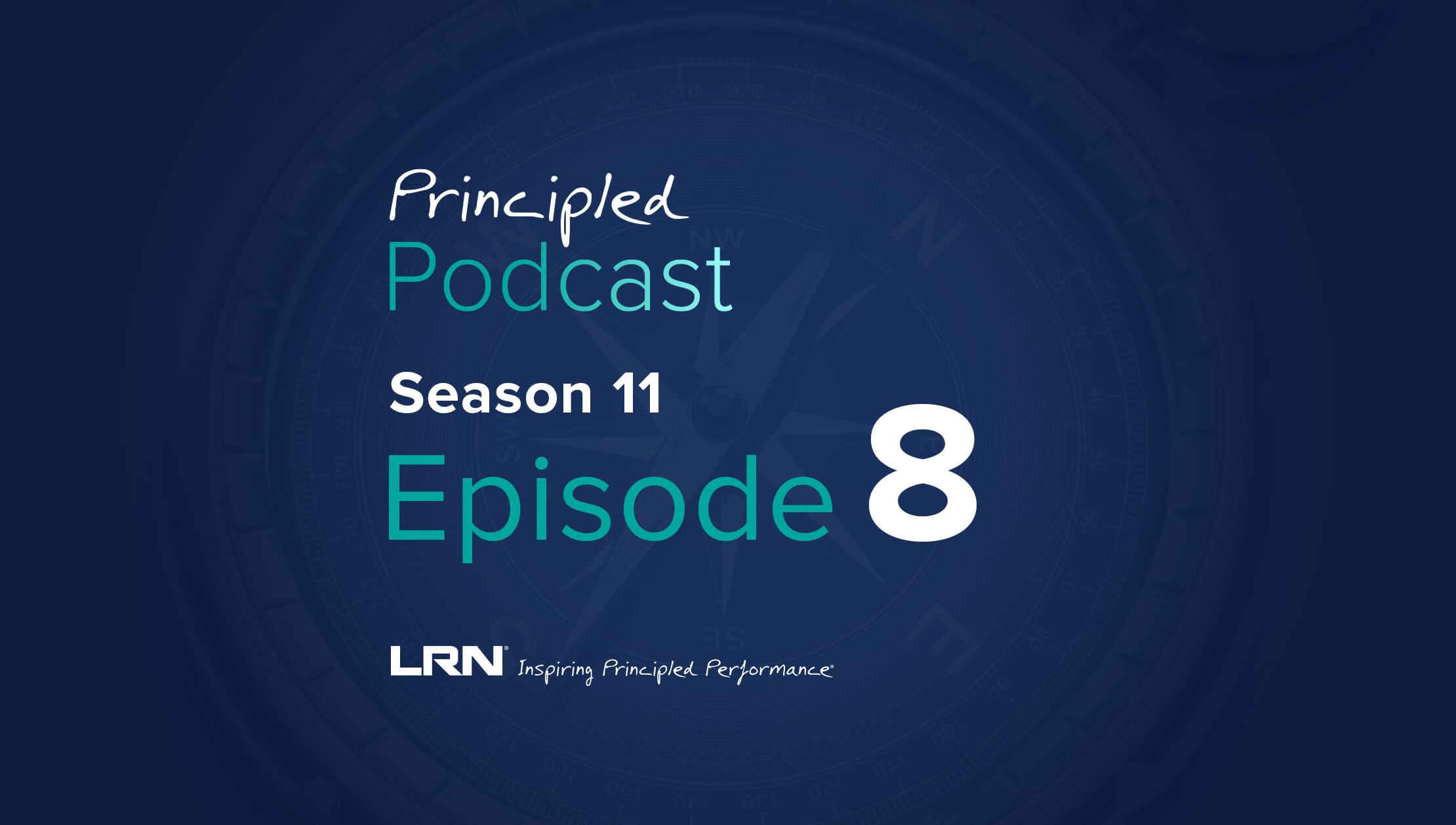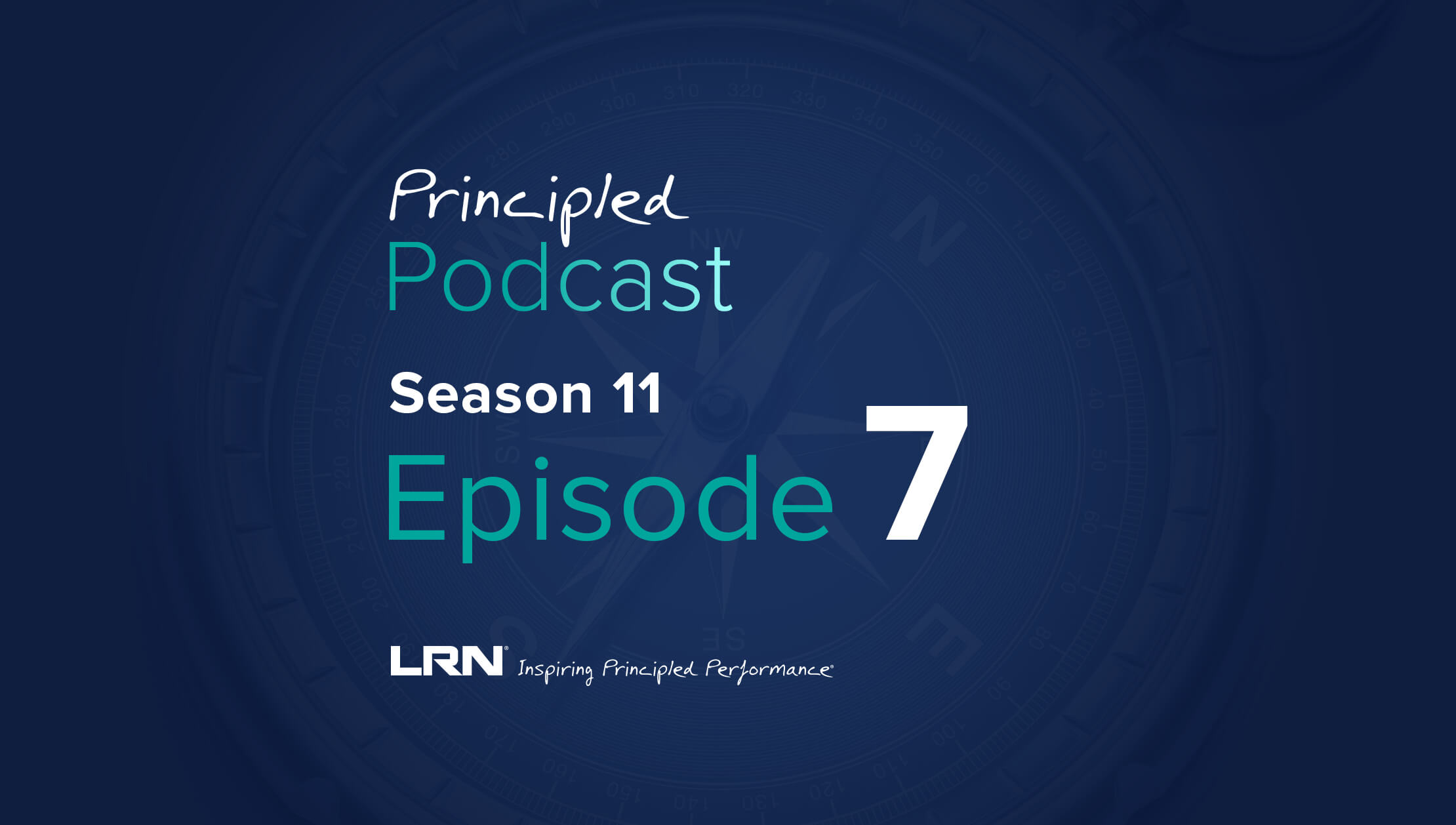On the surface, taking E&C training back in house can sound like a win-win proposition: saving substantial money year over year, writing content to ensure you get exactly what you want, training that “looks like us,” and engaging stakeholders. According to LRN’s 2023 Ethics & Compliance Program Effectiveness Report, 62% of our nearly 1900 respondents worldwide said designing and developing “more or nearly all” of their ethics and compliance training in-house was a priority for their program.
But this effort often follows a well-trod circular path: insourcing training and then outsourcing it three to four years later—usually at substantially greater expense—then insourcing again in three to four years when everyone forgets the lessons learned earlier in the cycle. Rinse and repeat.
Why is that? What should you think about before making the change? Here are five essential questions to consider before falling into the often-vicious cycle of insourcing.
Is your E&C training trying to boil the ocean?
Developing effective E&C training requires a multi-year approach to ensure that all the relevant risk topics are covered in the right depth and sequence. If insourcing means you are relying on a two to three-hour annual “kitchen sink” course that covers everything from antitrust to DEI to money laundering, think again. A recent LRN-Business Ethics Leadership Alliance white paper indicates that this approach can set employees up to fail by throwing too much information at them to assimilate in one session.
An effective training strategy frequently ties to organization’s code of conduct and kicks off each year with code training followed by a quarterly curriculum that addresses critical risks and legal necessities (such as various state sexual harassment training mandates) in more depth. Most codes cover around 20 to 25 different topics (or more!) which means a large number of complex courses to develop internally. And unexpected risks such as COVID-19 or the war in Ukraine can necessitate developing new training content quickly and efficiently.
Moreover, key messages in the training need to be reinforced with a coordinated communications strategy, as the white paper we produced with Ethisphere Business Ethics Leadership Alliance on training effectiveness points out. Ethisphere’s data shows that effective training requires carefully coordinated communications campaigns supporting and reinforcing key messages. Throwing content at employees and hoping something sticks isn’t a sound strategy.
Doing training well means doing it right and covering the organization’s risk universe in a comprehensive but structured way. That is a big job for E&C departments, no matter how well staffed.
What’s the shelf life of your compliance program?
Once the basic courses are developed, the E&C team then faces the challenge of ensuring that they are current with the organization’s policies, law, regulations, and changing risks. The scope of this task should not be underestimated.
For example, recent wide-ranging and sweeping changes to sanctions and export control laws are a good example of the challenges that can be inherent in maintaining an up-to-date library. Making sure that employees are equipped to meet supply chain requirements in light of the broad sanctions on Russia, export control restrictions on China, and the reimposition of restrictions on Iran isn’t optional—it’s essential to risk mitigation. Even a mundane course such as records retention needs to be current with changing legal requirements or risk compliance failures. And, if in-house training includes videos or other formats, they need to be brought up to date as well. Plus, there’s always the challenge of translations.
Does your compliance training speak the language?
One of the questions that the 2020 Evaluation of Corporate Compliance Programs guidance promulgated by the Criminal Division of the US Department of Justice asks is “has the training been offered in the form and language appropriate for the audience?” Best practice is to lean in favor of translations where possible to enhance employee engagement and comprehension. The DOJ’s use of the term “form” also suggests that localizing training to ensure relevance is important.
There are many competent and good translators available, but managing initial translations and subsequent updates is a big task that must be done correctly, particularly if you have 20+ courses. And, given the complex nature of many training courses, getting local legal review in each jurisdiction to ensure messages are accurate and clear is important. Without such review, many companies have found themselves in the embarrassing situation of having to pull back translations that might have been accurate but were nonetheless offensive to local sensitivities, problematic, or incorrect.
Are you starting an online debating society?
Another sometimes unintended but nonetheless significant consequence of insourcing training is managing stakeholder input. If various SMEs in the company need to draft training content and other stakeholders need to approve it, the process can quickly bog down. Different departments—whether Legal, HR, Finance, IT, or Health and Safety—can adopt different styles, making some courses overly complex or others too superficial. Multiple approval layers and input from many stakeholders can take time and result in a hodgepodge rather than coherent program.
And, as LRN's 2023 E&C Program Effectiveness Report showed, best practices in training include many features mentioned in the DOJ ECCP as important for employee engagement:

Ask yourself if you have a sufficiently robust platform and programming capability to include these and other features that are becoming common and make your training more impactful.
What compliance data and analytics can you get?
Another key disadvantage of insourcing training that too often occurs is losing the capacity to accumulate and analyze data from your training platform. In this year’s E&C Program Effectiveness Report, 76% of E&C professionals around the world listed the lack of robust internal systems as the biggest obstacle to improving their program effectiveness.
More importantly, the DOJ is increasingly focused on the need for E&C programs to collect and use data metrics to gauge impact and focus where the risks are most acute. The 2020 ECCP asks:
“Do compliance and control personnel have sufficient direct or indirect access to relevant sources of data to allow for timely and effective monitoring and/or testing of policies, controls, and transactions?”
In addition, the DOJ has hired a well-known former chief ethics and compliance officer who was a pioneer in data analytics at AB InBev to help the department use analytics and evaluate companies’ use of data.
Some internal platforms may be robust enough to obtain some of the training analytics that programs such as LRN’s new Catalyst Reveal provides—including test out completions, subjects causing the most difficulty, insights into which groups or geographic areas struggle with what training topics, and other data points that can signal program effectiveness. But using a platform that enables benchmarking against peer companies and easy year-over-year comparisons is becoming a best practice. Plus, Catalyst Reveal incorporates a short, built-in ethical culture pulse check feature that helps meet the DOJ’s emphasis on the importance of measuring culture. Replicating those capabilities could be challenging.
Escaping the vicious cycle
So, what is the best way to ensure that E&C training isn’t stale or canned and still avoid the burden of having to produce and update complex courses internally?
Consider a hybrid approach consisting of a state-of-the-art platform with easy customization features. Look for one (such as LRN Catalyst: Ethics & Compliance Management Platform) that allows edits in real time with the same ease as Microsoft Word. Rely on your provider to develop basic content, keep it updated and provide translations. A platform that incorporates features such as ethical culture pulse check or test out, ones which engage employees and provide actionable data metrics year over year with benchmarking in your industry provide significant value. They also allow E&C teams to focus on more important things than creating and updating course content. Combining the best of both worlds is the win-win solution.



